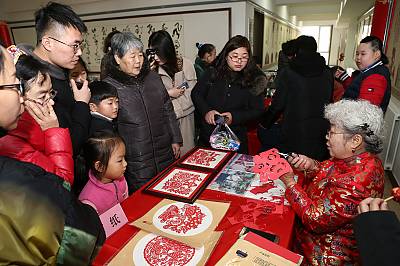The COVID-19 pandemic is a war between human beings and the virus. According to the current UNESCO survey over all continents, the responses collected so far have shown that the intangible cultural heritage is being affected globally, with so many diversified forms.
For instance, many festive events and celebrations related to the intangible cultural heritage were restricted or disrupted due to the temporary lockdown policy that had been widely applied in many countries.
In China, to curb the spread of the novel coronavirus, the Government rolled out a host of unprecedented moves, including extending the Spring Festival holiday, postponing the spring semesters of schools and universities, and adopting transport restrictions in various areas.
Moreover, communities, NGOs, and other organizations were asked to suspend mass gatherings amid the novel coronavirus outbreak.
In a global and domestic context as such, the traditional ways of practicing the intangible cultural heritage had been undoubtedly affected. For example, the old mode of transmission from ears to mouths was no longer dominated and encouraged, while the online way of passing down the knowledge with the help of social media became preferred and somehow required.
In some cases, where mass gatherings and collective celebrations were necessary components of the ritualized events, the conventional ways of practicing these elements had to be shifted from the traditional communal basis to the current familial or even individual basis.
In short, the COVID-19 pandemic has had a big impact on everyone’s daily life, and it also applied to the intangible cultural heritage in China without an exception.
However, with its enormous variety and ever-changing forms and functions, the intangible cultural heritage is subjected to adaptation into any social circumstances, reflecting people’s needs and their perceptions toward the outside world.
In the ongoing fight against the novel coronavirus, with its nature free of physical limitations, the intangible cultural heritage has provided important social and cultural resources to help people overcome the current difficulties.
For example, tradition bearers all over the country were called upon and mobilized to compose thematic ICH work on the fight against the virus, in order to take the advantage of the living heritage to promote the social unity and strengthen the cultural identity under the special background of the COVID-19 pandemic.
As was shown, domestic bearers and practitioners used diverse forms of traditional cultural expressions such as papercut, wooden-print, embroidery, pottery, painting, calligraphy, performing arts, and etc., to create a great number of ICH works reflecting the ongoing fight against the virus and people’s great determination for success over it.
In some other areas, oral traditional genres, such as storytelling, singing, chanting and etc. played an important function in sharing the information and knowledge necessary for the implementation of relevant anti-epidemic measures.
The above shows that ICH in China is living heritage. It carries Chinese people’s identity and values and gives them a sense of continuity and identity. ICH elements have a long history of practice and significance but, most importantly, they have a current relevance for the people who practice them. Their social functions and cultural meaning are even more profound and significant in the context of the COVID-19 pandemic than usual.
Las designaciones utilizadas y la presentación de los textos y documentos presentados en esta plataforma no suponen ninguna toma de posición por parte de la UNESCO acerca de la condición jurídica de los países, territorios, ciudades o zonas ni respecto al trazado de sus fronteras o límites.
